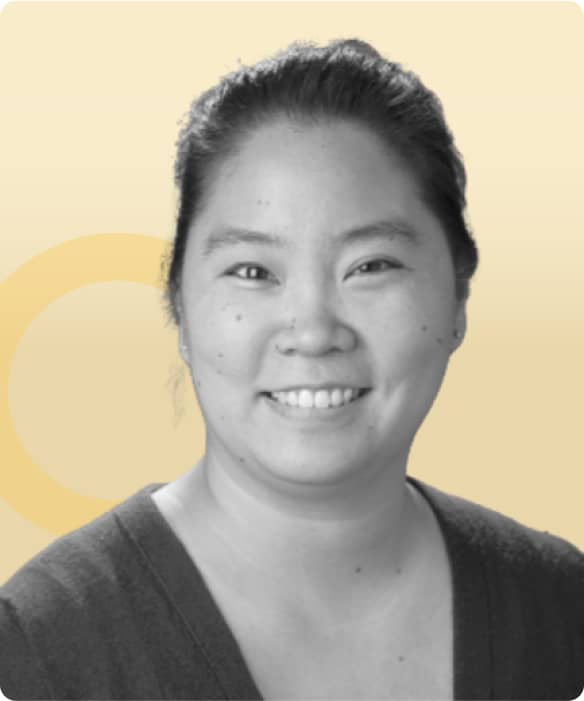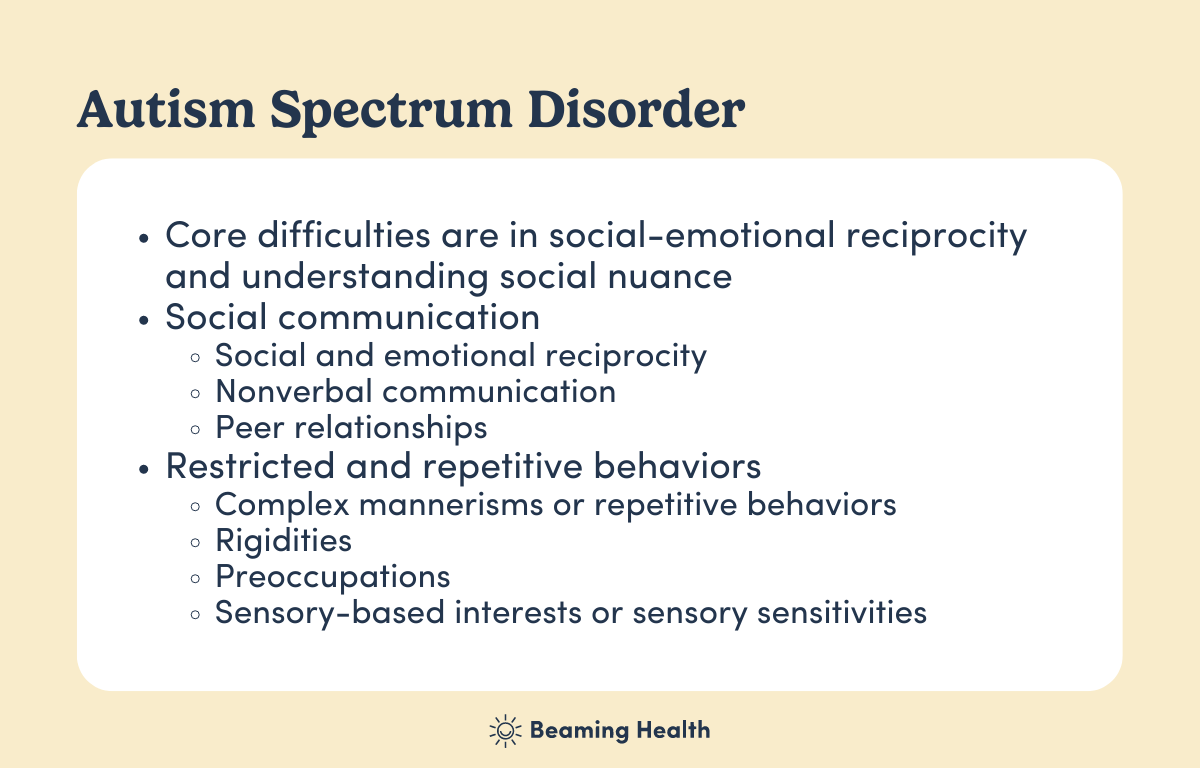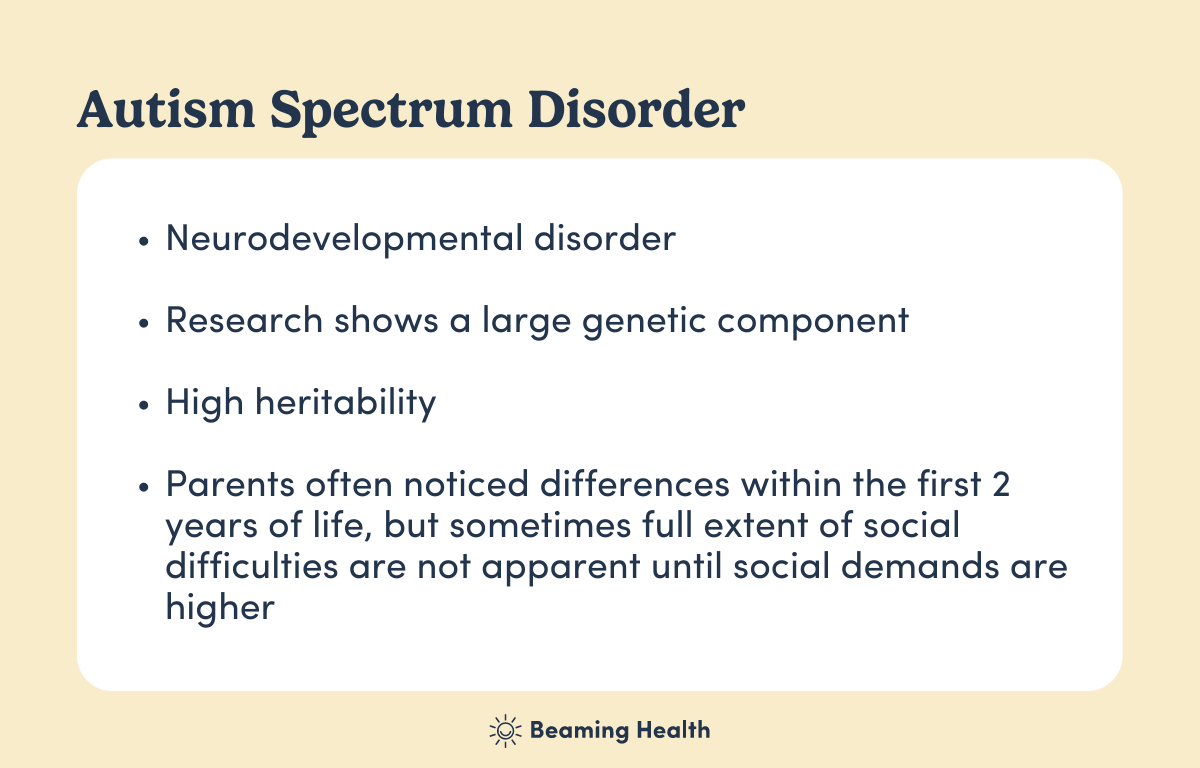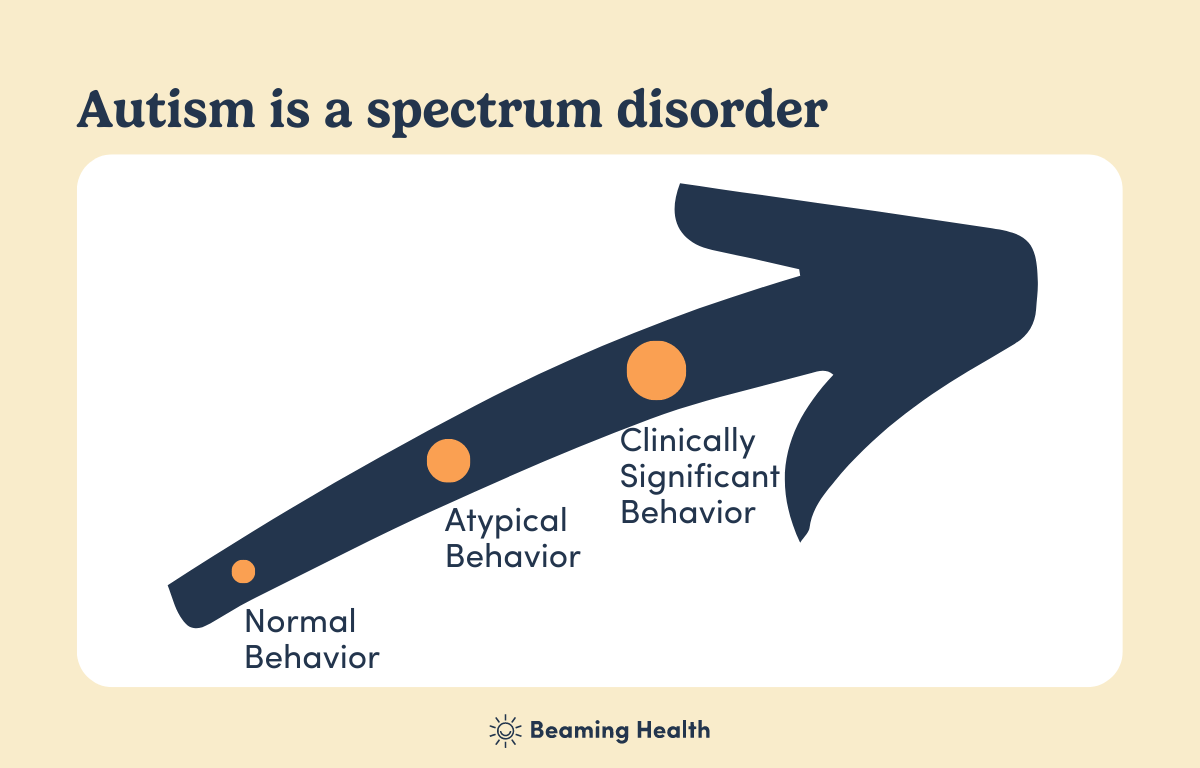Autism spectrum disorder Q&A with Dr. Melanie Hsu
Updated: August 29, 2023 · 6 Minute Read

Reviewed by:
Melanie Hsu, Ph.D.
Highlights
- Autism spectrum disorder (ASD) is considered a neurodevelopmental condition (affects the way the brain works).
- ASD impacts the way someone perceives, processes, and interacts with the world around them. Those with autism may interact with the world differently than those without autism.
- Many parents may notice signs of autism during their child’s first two years of life. For others, a child's signs may not be as obvious and may lead to a delayed diagnosis later in life.
- Since autism is a spectrum disorder, no two autism diagnoses are the same.
- When identifying autism, doctors look for clusters of atypical behaviors that might make life challenging for the individual.
Beaming Health’s co-founder Marissa Pittard sat down with autism expert Melanie Hsu, Ph.D. to talk about the science behind autism and the therapies that can help children thrive. They answered the most common questions about autism and chatted live with parents. In this clip, Melanie briefly breaks down the basics of autism and what clinicians look for when making a diagnosis.
This transcript has been edited for length and clarity. You can find the full video conversation in the Beaming community.
What is autism?
Autism Spectrum Disorder (ASD) is a disorder that has core difficulties with social-emotional reciprocity (SER) which is the ability to interact with another person or a group. Autistic people might not understand subtle social nuances or common social behaviors. For example, they might find conversations challenging and not be able to easily go back and forth in social interactions.

How do you know if a child is autistic?
Doctors look into two main areas: social communication skills and atypical behaviors. The following two bullets are the criteria that we see in the DSM, which is the manual that we use to be able to make a diagnosis of autism.
Social communication skills: ability to understand social relationships and use communication, both verbally and non-verbally, to be successful in social interactions
Restricted and repetitive behaviors (RRBs): autistic children tend to have special interests or follow a strict routine (check out our more comprehensive guide of autistic signs and traits)
Sometimes people get confused as to why RRBs are included in a diagnosis of autism. Let’s take a deeper look at how all of these things fit together and where some of these difficulties are coming from so that we're all understanding how to best support individuals.

Autism is a disorder that affects the way people think and behave in the world.
Autism spectrum disorder is a neurodevelopmental condition and this is why we were talking about neuropsychological underpinnings. Autism is part of a group of neurodevelopmental disorders. Other neurodevelopmental disorders include ADHD or attention deficit hyperactivity disorder, for example, sensory processing issues, and speech and language issues.
There is a large number of neurological underpinnings to neurodevelopmental disorders. There are many things that have a neuropsychological root, which is what we’re going to be talking about a little bit later.
Autism is mostly genetic and it’s common to have overlap with other neurodevelopmental disorders.
There is also a large genetic component and because it is part of a bigger constellation of neurodevelopmental disorders, you’ll often notice that it overlaps with many other diagnoses. So, it’s not uncommon, especially for me as an assessor, to see children a little bit later in life who have had multiple other diagnoses.
And even though a lot of times parents start noticing differences in the first two years of life, sometimes not everything is as well understood until later, especially for higher functioning individuals (or more appropriately, people who need less support). Or, for example, cis-gendered girls are often diagnosed significantly later than cis-gendered boys.
One of the important things in clinical psychology is to understand all the different components. To say, ‘What might be causing these difficulties?’ and ‘How do we address them in a way that is comprehensive?’ Not just targeting one area, but understanding the child or the individual as a whole.

Autism is a spectrum.
Another important thing to keep in mind is that we’re looking at a spectrum.
One of the reasons why the diagnosis changed from autistic disorder and Asperger's disorder to autism spectrum disorder is to acknowledge the fact that everything lies upon a spectrum.
We are not trying to pathologize the wide range of behaviors that we see. Neurodiversity is part of what makes us as humans unique and special. What we are looking at is when behaviors or other symptoms are causing clinically significant difficulties or areas that are making it harder for an individual to be able to participate in what they need to do to be successful.
Doctors look for clusters of atypical behaviors that make life challenging when identifying autism.
There are 3 types of behaviors doctors see:
- Normal, typical behaviors that are widely seen or commonly seen
- Atypical behaviors that are unique or don’t lie within the spectrum of what we normally see
- Clinically significant behaviors
With autism, we’re looking at particular clusters of behaviors that go together. That all together equals ASD. So this concept of spectrum and how this is, is also going to be important for some of the things we are going to talk about later.
But in general, understanding that we’re looking at behavior along that continuum is an important concept to think about because we don't want people to think that we're just saying, ‘Well this is not what's normally seen, therefore it’s problematic.’ It’s, again, trying to remove barriers for people.
Get our best articles delivered to your inbox each month.
We respect your privacy.













